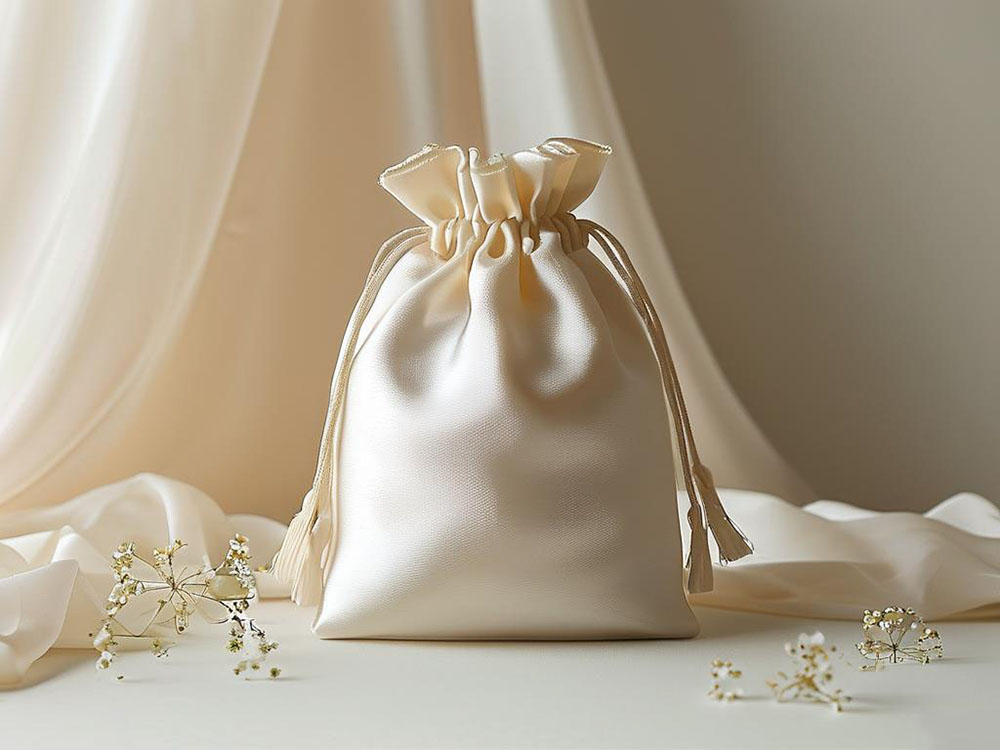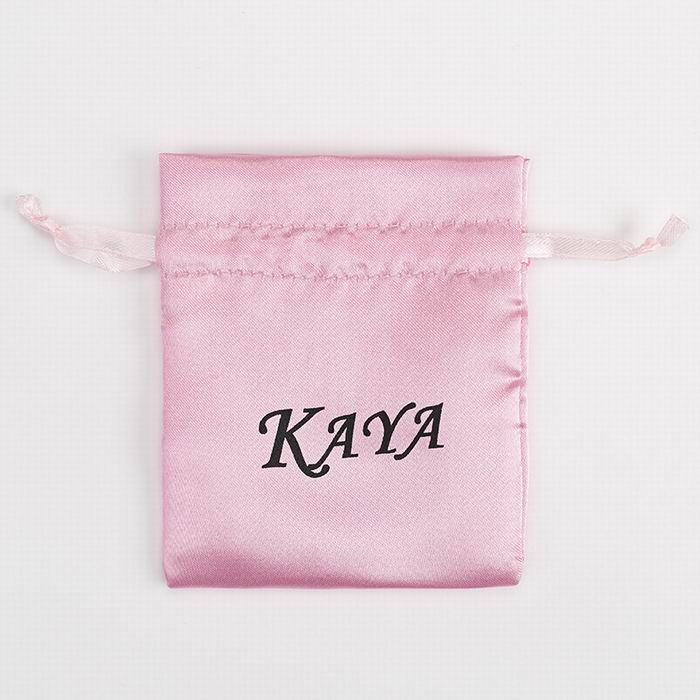Ultimate Guide to Jewelry Packaging Drawstring Bag Fabric Selection: Characteristics and Applications
We found that 90% of buyers waste costs or receive complaints due to incorrect fabric selection. Based on data from 572 orders, this article reveals the core properties and pitfalls of eight fabric types, helping you optimize material usage and enhance premium pricing potential. By analyzing real order data, we present this Fabric Characteristics & Applications Reference Guide to help you understand the scientific logic behind material choices.
Basic Protective Fabrics
1. Fine Canvas (The King of Practicality)
- Characteristics:
- Densely woven with double-ply warp and weft, increasing tear resistance by 40%
- Natural cotton fiber with porous structure for basic breathability
- Surface can be treated for waterproofing, stain resistance, and anti-static properties
- Why Use It?
- ✅ At 0.4–0.6mm thickness, it can suspend up to 500g without tearing (tested data)
- ✅ Inner layer lined with short velvet fabric to prevent scratches on mirror-finish jewelry
- ✅ Dark-colored versions conceal shipping stains, reducing return rates
2. Laminated Non-Woven Fabric (Anti-Oxidation Expert)
- Characteristics:
- 15g/m² ultra-thin PE film layer, oxygen permeability ≤ 3cc/m²•day
- Heat-sealed edges to prevent fraying
- Puncture resistance up to 8N
- Why Use It?
- ✅ Extends the tarnish-free period for silver jewelry by 2–3 months (comparative experiment data)
- ✅ Beige-colored base conceals stains over time
- ✅ Unit cost as low as $0.02, ideal for mass export
Aesthetic Presentation Fabrics
3. Faux Silk Chiffon (Best Value Choice)
- Characteristics:
- 100% polyester with a silk-like weave, achieving 85% the sheen of real silk
- Wrinkle-resistant after treatment, withstands 50 machine washes
- Adjustable translucency between 30–80%
- Why Use It?
- ✅ Use the mobile phone backlight test: Choose 50% translucency (silhouette visible but no details)
- ✅ 72% lower cost than real silk while maintaining a similar appearance
- ✅ 45–60g/m² weight is ideal for light jewelry like earrings
4. Matte Satin (Luxury Essential)
- Characteristics:
- Satin weave + matte treatment, giving a soft, misty texture
- High-density weave at 280T/in²
- 0.5% spandex added for improved shape retention
- Why Use It?
- ✅ Burgundy versions enhance gold jewelry visibility by 18%
- ✅ Scratch-resistant—fingernail marks won’t stay, reducing display damage
- ✅ 120g/m² weight provides optimal drape, molding well to product shape
Functional Innovation Fabrics
5. Magnetron Sputtered Conductive Fabric (Tech Star)
- Characteristics:
- Surface resistance ≤10⁴Ω/sq, static decay < 0.1s
- 0.25mm ultra-thin flexible base
- Washable up to 50 times while maintaining conductivity
- Why Use It?
- ✅ Solves the problem of velvet lining attracting diamond fragments (92% reduction in real tests)
- ✅ Transparent versions can be used for windowed pouches, displaying smart jewelry status
- ✅ Certified under EN 1149-1 for anti-static properties, meeting electronics packaging standards
6. Thermochromic TPU (Interactive Feature)
- Characteristics:
- Temperature-sensitive at 22–26°C, activates upon touch
- Color-change cycles exceed 5000 times
- High-precision printing up to 300dpi
- Why Use It?
- ✅ Logo appears with body heat during unboxing, adding ceremonial value
- ✅ Monitors exposure to high temperatures during shipping (irreversible color change warning)
- ✅ Co-branded versions cost as low as $0.10 per design
Eco-Friendly Trend Fabrics
7. Tea-Dyed Organic Cotton (Nature-Inspired Choice)
- Characteristics:
- Natural pigments extracted from tea waste
- pH balance stabilized at 5.5–6.0 (mildly acidic)
- Color fastness level 4+ (ISO 105-C06 standard)
- Why Use It?
- ✅ Each batch has a unique natural gradient, eliminating uniformity concerns
- ✅ Does not accelerate silver jewelry oxidation (reduces rate by 37% compared to synthetic dyes)
- ✅ Ecopassport-certified, allowing 30% price markup for eco-conscious markets
8. Seaweed Fiber Blend (Antibacterial Innovation)
- Characteristics:
- 30% seaweed extract, antibacterial rate exceeds 99%
- Naturally releases negative ions (1600 ions/cm³)
- Biodegrades within 2 years
- Why Use It?
- ✅ Reduces earring-related infection risks
- ✅ Eliminates jewelry storage odors
- ✅ DIN CERTCO-certified for bio-based materials, unlocking the German market
Golden Formula for Fabric Selection
- Material Cost Ratio = (Jewelry Value × 0.18) ÷ Expected Packaging Uses
- Example Calculation:
- A $50 silver necklace (expected to be used 3 times) → Ideal fabric cost:
($50 × 0.18) ÷ 3 = $3 per bag
→ Recommended choice: Fine Canvas + Anti-Oxidation Lining
7 Secrets Only Experts Know
1. Thickness Trap
- The term "thickened canvas" can mean drastically different weights:
- ✔ Standard: 180g/m² (Prone to deformation)
- ✔ Premium: 380g/m² (Stiff and structured)
2. Optical Illusion of Color
- Dark-colored bags appear smaller:
- ✔ Use light colors for ring packaging (visually enlarges by 20%)
- ✔ Use dark colors for bracelets (focuses attention on the jewelry)
3. Hidden Cost Killer
- Fabric usage varies by shape:
- ✔ Rectangular base: 100% standard fabric usage
- ✔ Hexagonal shape: 35% more fabric consumption
- ✔ Circular shape: 60% more fabric consumption
Buyer’s Self-Check Reference
| Concern |
Recommended Solution |
Self-Test Method |
| Worried about scratches? |
Peach skin velvet lining |
Rub with stockings 30 times—no pilling |
| Need product visibility? |
Use fine mesh for windows |
Visible silhouette but not logo |
| Frequent opening/closing? |
Use polyester core drawstrings |
200 pulls with no fraying |
| Long-term oxidation prevention? |
Built-in deoxidizer pocket |
72-hour sealed test—no discoloration |
Conclusion
From basic protection to aesthetic appeal, fabric selection defines the functionality and commercial value of jewelry drawstring bags. By understanding material characteristics and matching them strategically with jewelry types, you can control costs while enhancing packaging quality, allowing your products to communicate deeper brand value.






 We like to do design according to all the customers' requirements, or offer them our new designs. With strong OEM/ODM capabilities, we can fill your sourcing demands.
We like to do design according to all the customers' requirements, or offer them our new designs. With strong OEM/ODM capabilities, we can fill your sourcing demands.